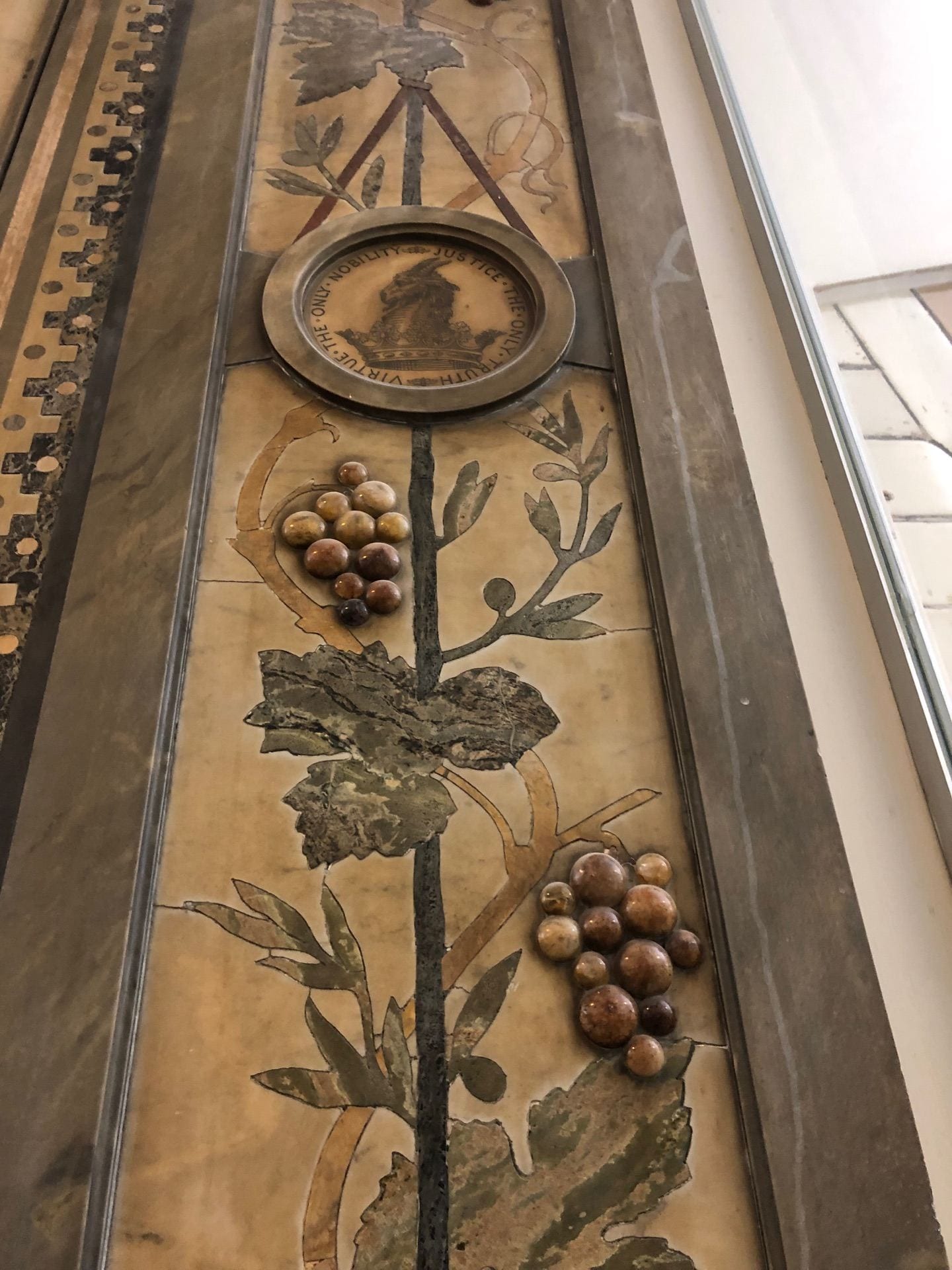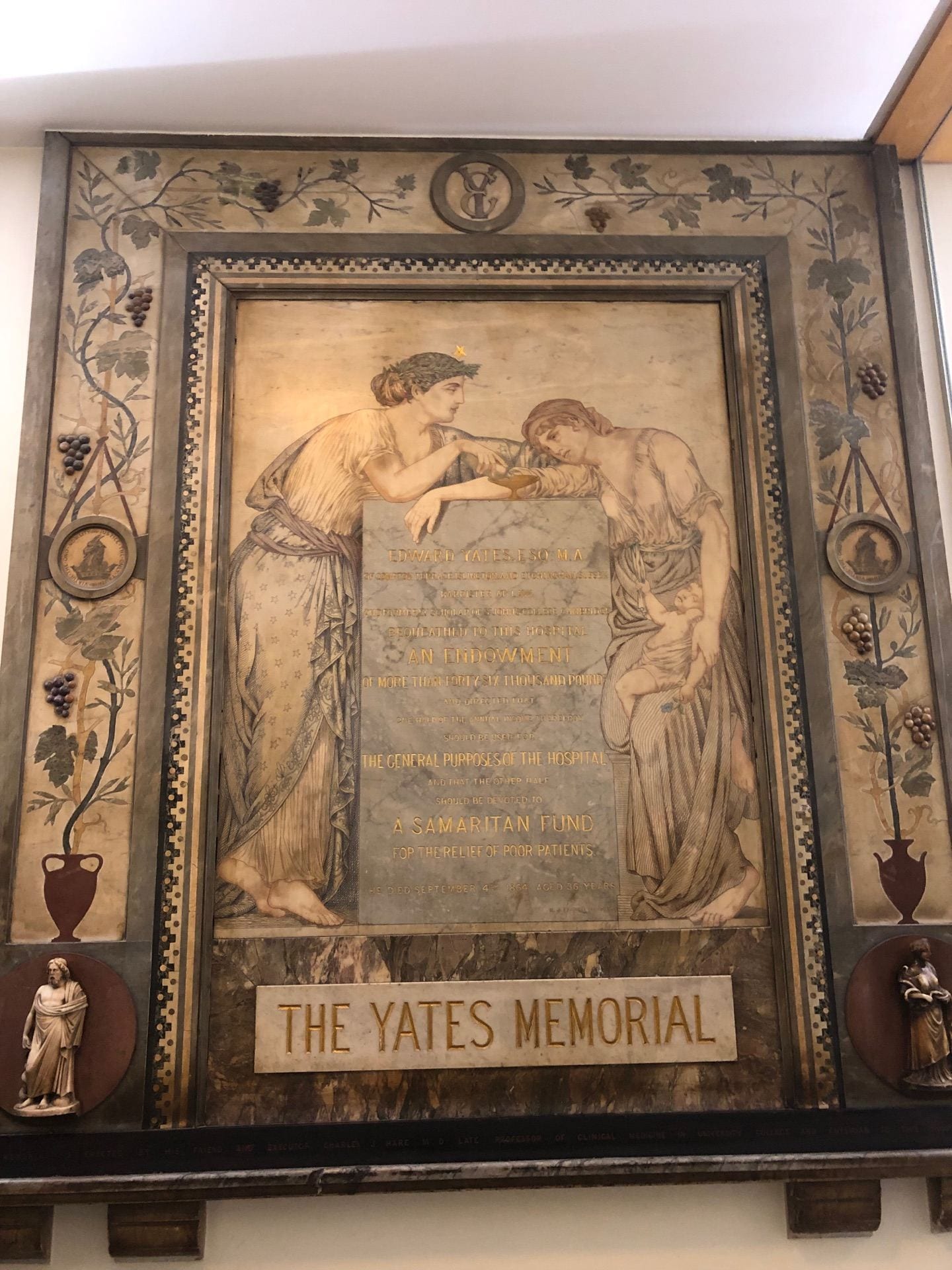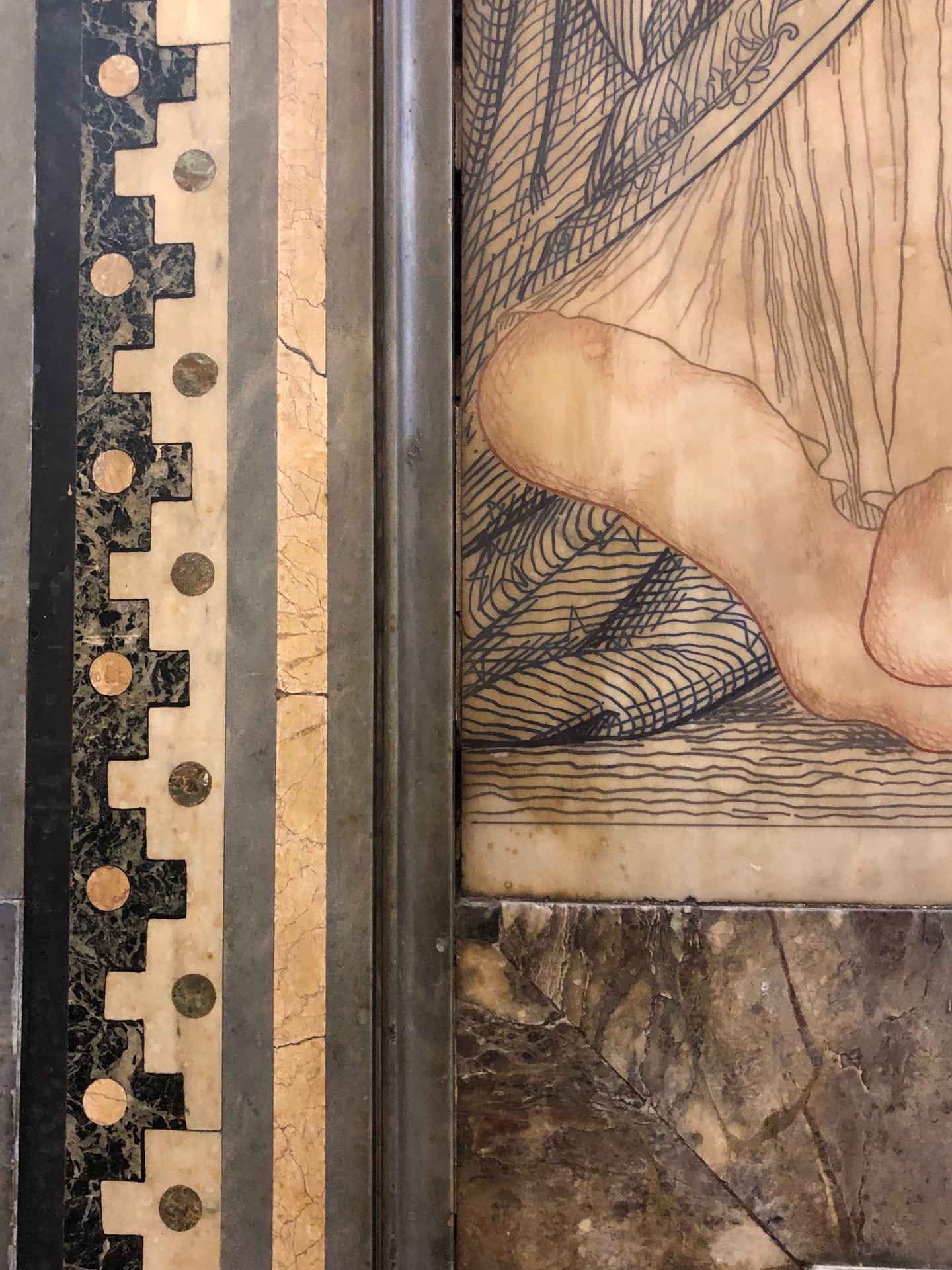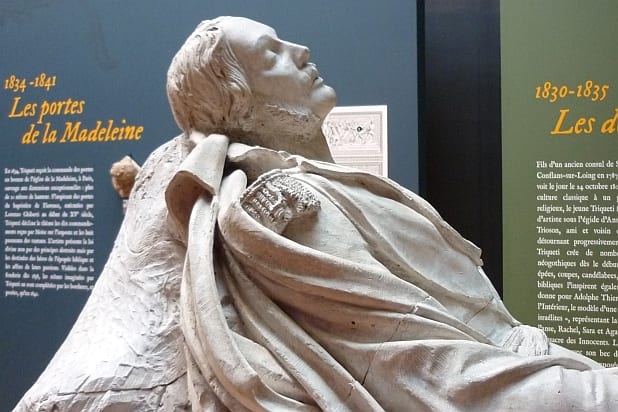[Last modified: March, 21 2019 05:11 PM]



The Yates Memorial
| Collection | UCL Art Museum |
| Maker | Henri de Triqueti |
| Date | 1864 |
| Dimension | circa 5m per 3 pm |
| Current Location | First floor landing of UCLs Cruciform Building, on the left of the Wolfson Institute; London, UK. |
| Materials | White Carrara marble floor. Decorative elements on top made from green mottled serpentine, black limestone, amethyst and yellow Spanish limestone. |
Here is the first object in our exhibition, a commemorative panel dedicated to Edward Yates.
The Yates Memorial is a rectangular panel composed almost entirely of white Carrara marble. It was produced by the Italian-French sculptor and Baron Henri De Triqueti (1803-1874) in the 19th century. Triqueti was commissioned this work by a professor of medicine at University College London, Charles J Hare, who wanted to honour the passing of the late Edward Yates. Yates was an admirer of UCL, and upon his passing, he left a significant economic donation of£40,000 to the university’s medicine department and hospital. At the time, the hospital was in the Cruciform Building; this is where you can find the memorial today.
Details of the panel are made using the Intarsia technique. This means that the coloured marble elements are attached to a single marble ground with cement. The technique was unknown in England at the time, making the memorial particularly innovative.
Statue of Triqueti in the Musée Girodet, Montargis.
from: http://www.victorianweb.org/sculpture/triqueti/review.html
Did you know?
Triqueti was valued in England for his innovative techniques. However, he was also revered for his close ties with the English Royal family. Prince Albert frequently visited him in London. Queen Victoria commissioned Triqueti the dense decoration of the Wolsey Chapel at Windsor Castle. Perhaps UCL sought to possess a work made by Triqueti to elevate the University’s reputation. Unsurprisingly, the reveal was a high profile event. The President of the Royal Academy was one of the many special guests!
